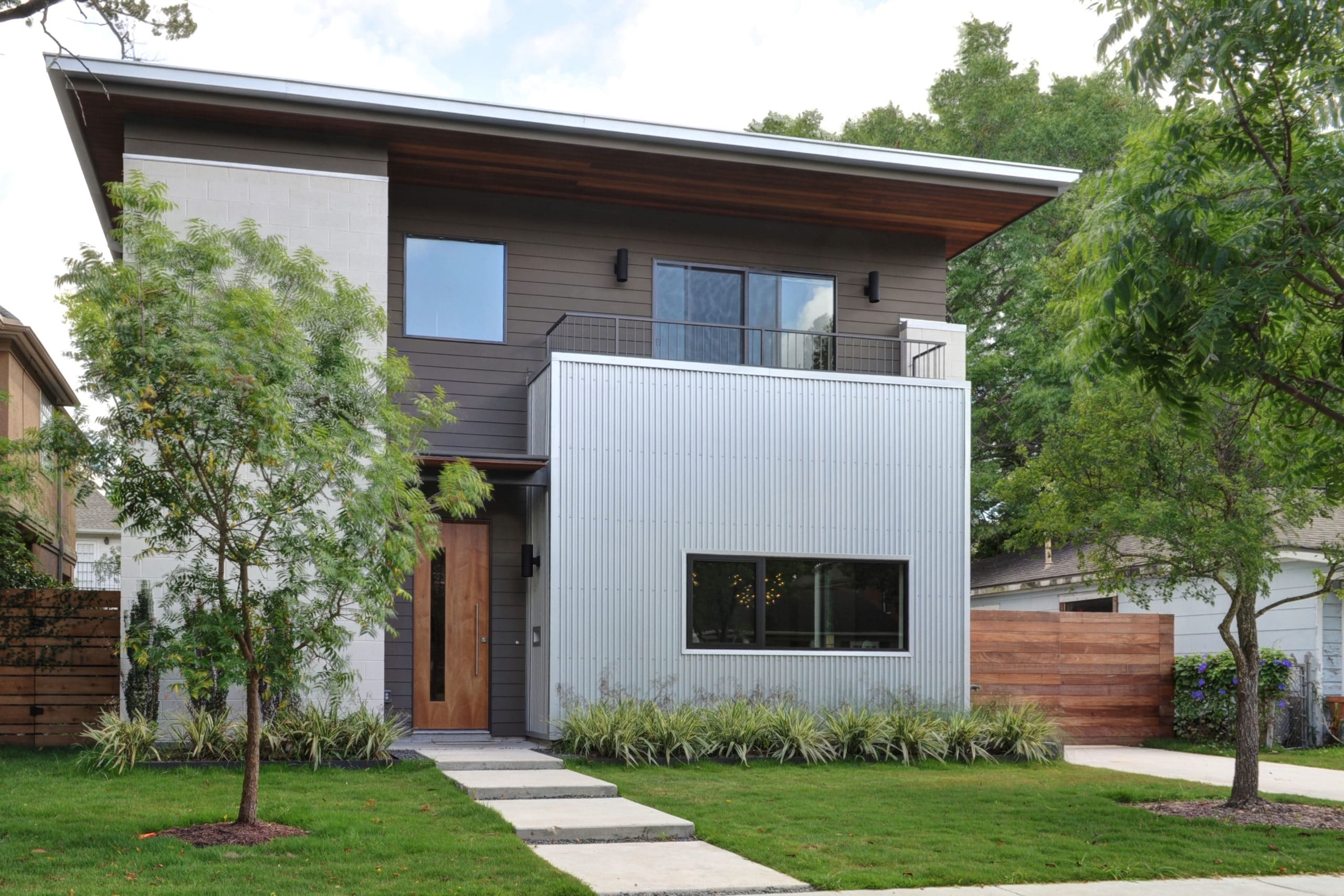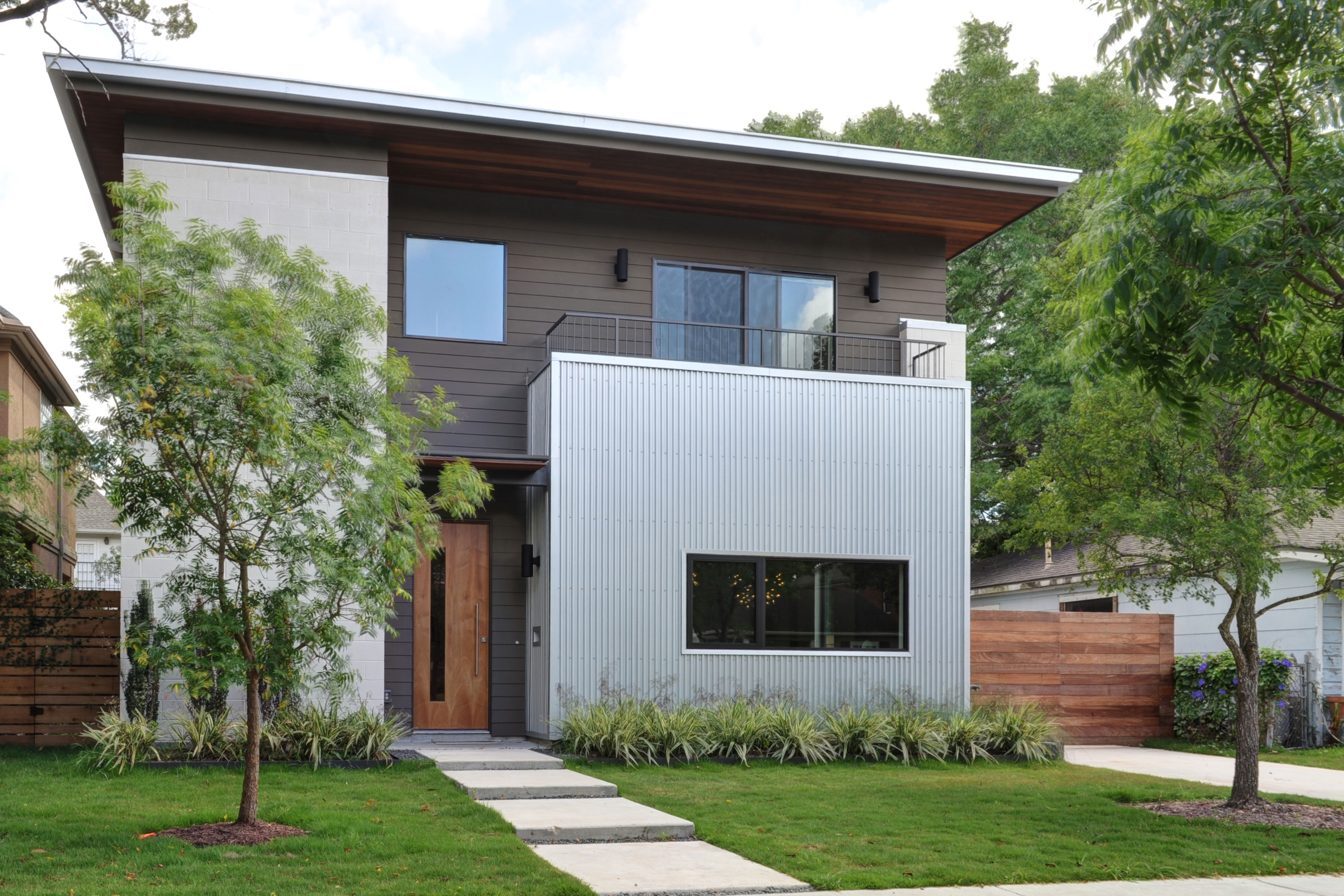
Corrguated metal, ipe Brazilian wood, and concrete panels make up the outside of this West University Place, Texas house. Inside, floor-to-ceiling windows bring in plenty of natural light.
[Courtesy of StudioMET]
StudioMET grants one Houston family’s wishes by reducing waste and making the most of the space
PROJECT
LOCATION
Houston
SIZE
3,200 square feet
COMPLETION
2015
HONORS
Houston Modern Home Tour &
PaperCity Design Award
for Sustainable Design
TEAM
ARCHITECT
StudioMET
LANSCAPE
ARCHITECT
StudioMET in collaboration with clients
CONTRACTOR
Modern Concept Construction
SOLAR
Texas Solar Outfitters
In West University Place, Texas—just southwest of Houston’s city center in the metropolitan area—the two-story, 3,200-square-foot Emory House is proof that less is more. The exterior of the house is striking—a combination of corrugated metal, ipe Brazilian wood, and concrete panels with a thin, flat roofline. Inside, you won’t find frivolous decor, but instead a clean, modern space filled with natural light. The house reflects what matters most to the residents—the environment and each other.
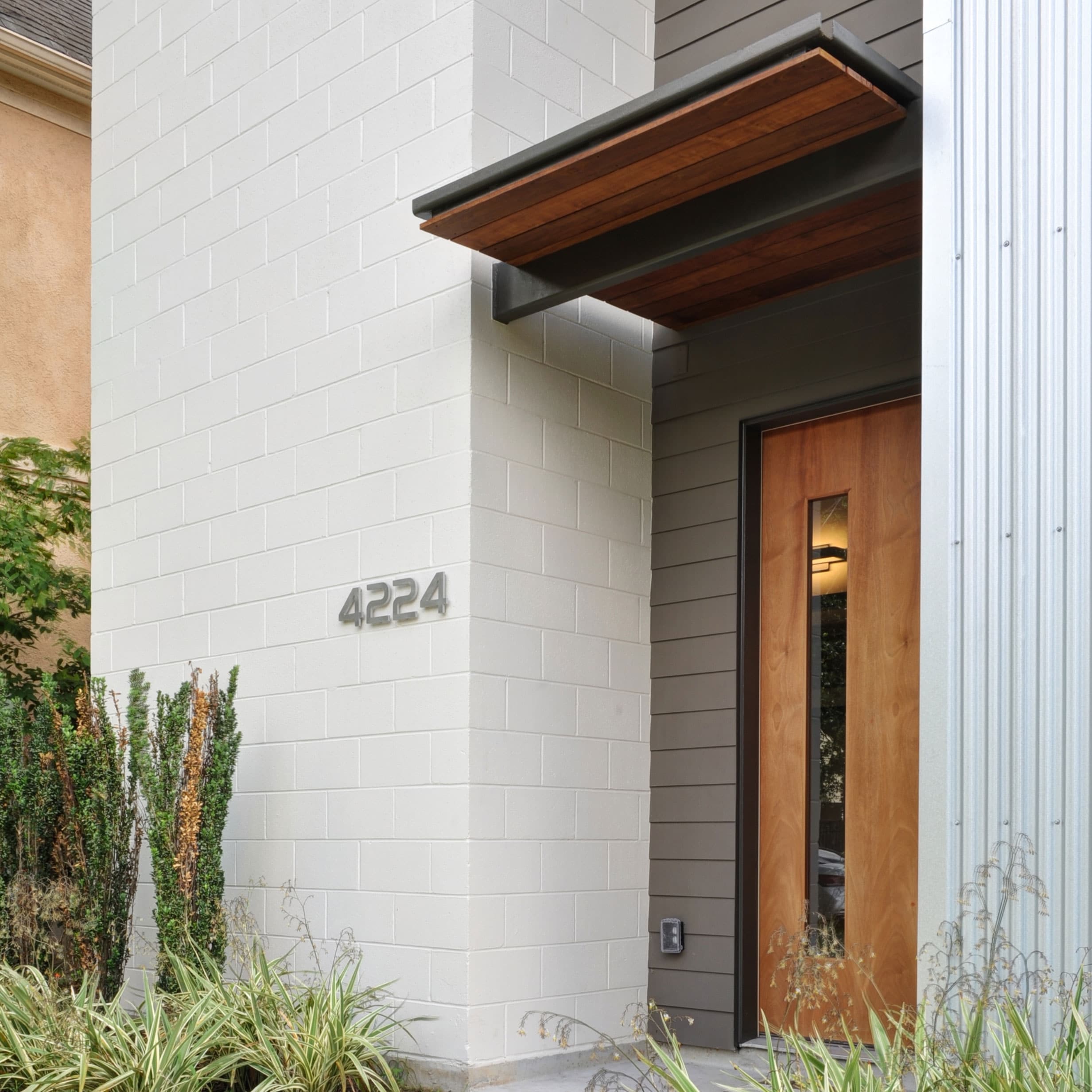
[Courtesy of StudioMET]
The Agrawals wanted an efficient home on a small lot that had green space for their children to play. They searched their neighborhood for real estate, but when they realized what they wanted didn’t exist, they decided it was time to go the custom route. So they searched for a lot on which to create the house of their dreams, and then they brought in StudioMET, AIA Houston 2016 Firm of the Year, to make that dream a reality.
Having an efficient, eco-friendly home was at the top of the to-do list. “We are not ignorant to the fact of how much waste and energy humans create and use,” says homeowner Neha Agrawal. “We have a very long view and want to do our part to improve the chances of our future generations to have a clean and healthy place to live.”
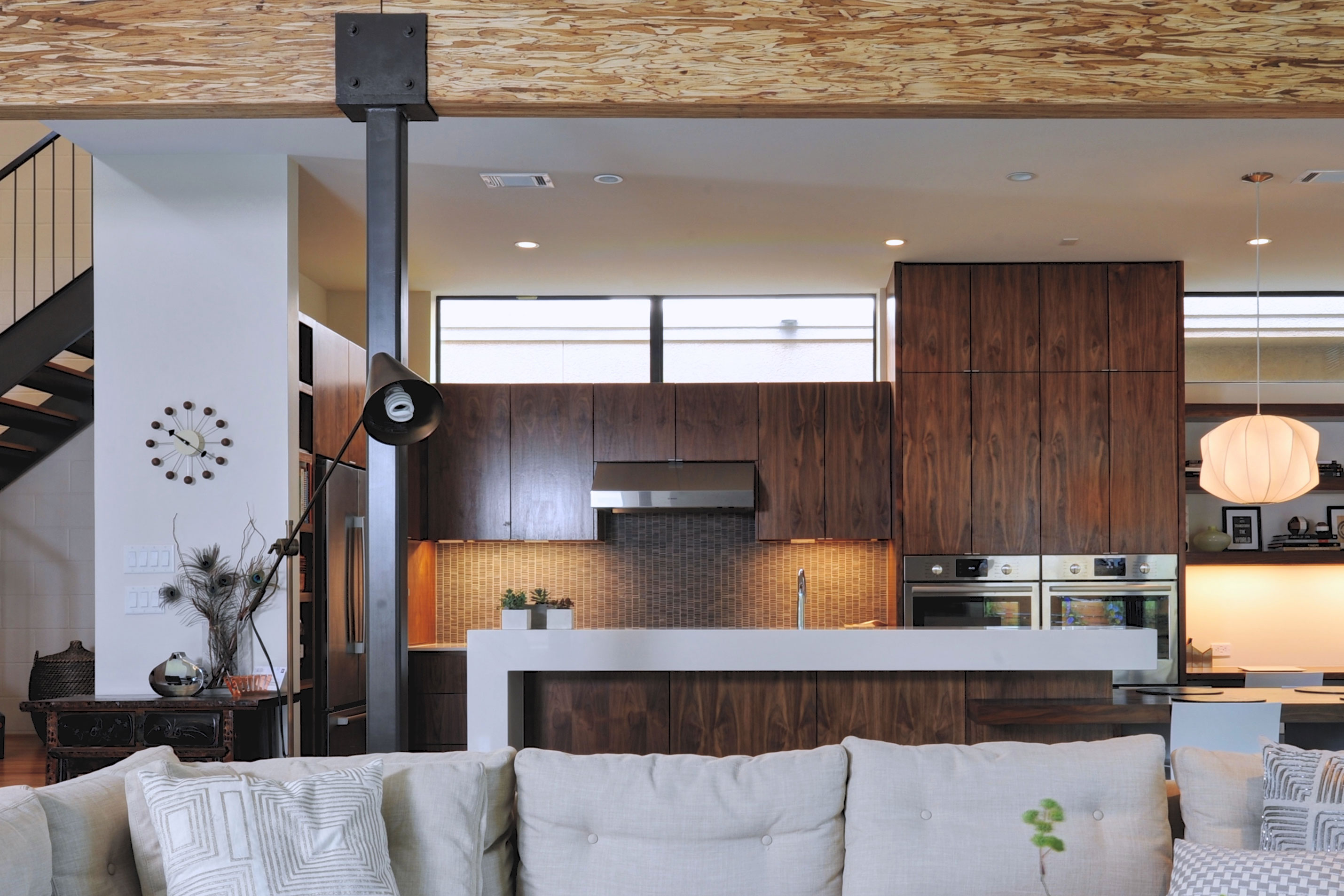
[Courtesy of StudioMET]
Before the move, the Agrawal family lived in a 2,450-square-foot townhouse with many small rooms over various floors in the Houston Museum District. They wanted a house that allowed them to spend more time together in the same space. “Our conscience movement to minimize waste and energy has naturally led us to a minimal lifestyle, which has actually forced me to change my perspective on where I place value—quality over quantity,” Agrawal says. “By modeling this, I hope I’m passing this on to my kids.”
Doing more with less was the driving ethos for this project, according to Yoonchul You, the project’s lead architect. You maximized space on the tight lot, tucking a grass paver system that provided structural support as a driveway but also allowed the grass to grow into the back of the lot; it also served as a mini soccer pitch. A small patio extends the living space outside as well, further opening the space.
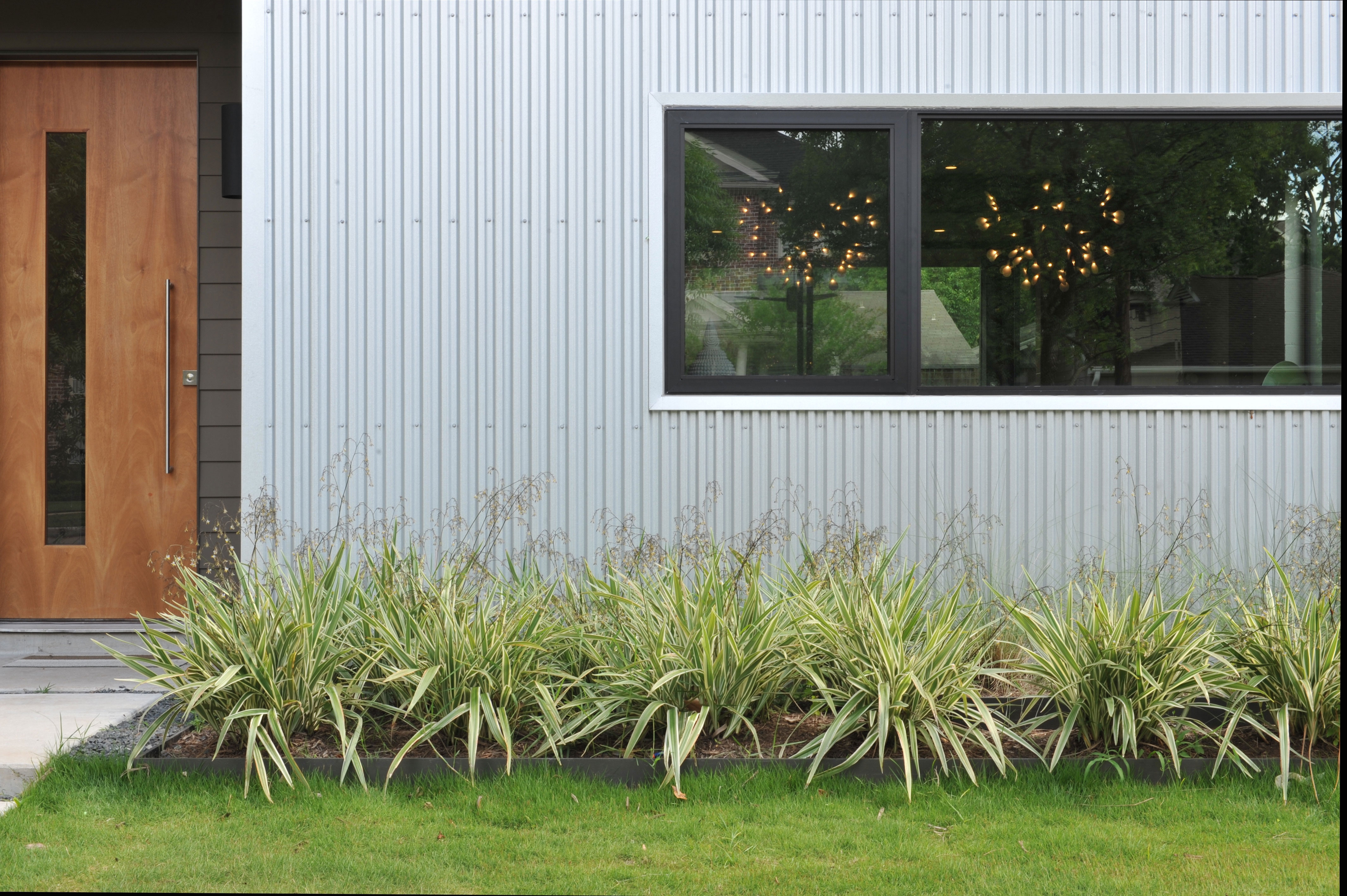
[Courtesy of StudioMET]
Agrawal’s favorite thing about the house is how low maintenance and energy-efficient it is. The energy bills now are about the same as they were in their former, smaller house, and the new home’s bills are expected to decrease even more since the homeowners activated solar panels in the fall. The couple expects a return on their investment in about 10 years.
The Agrawals went above and beyond when it came to sustainable features inside the new house, too, with an emphasis on togetherness. The first floor is an open concept living, dining, and kitchen area, while a yoga terrace overlooks the backyard. Upstairs are the private bedrooms, master suite, and family room. The wood floors on the stair treads and upper floor of the house were found and repurposed through Habitat for Humanity. “The homeowners are very environmentally conscious and wanted to find a way to reuse good wood floors that would have otherwise been left in a landfill,” You says.
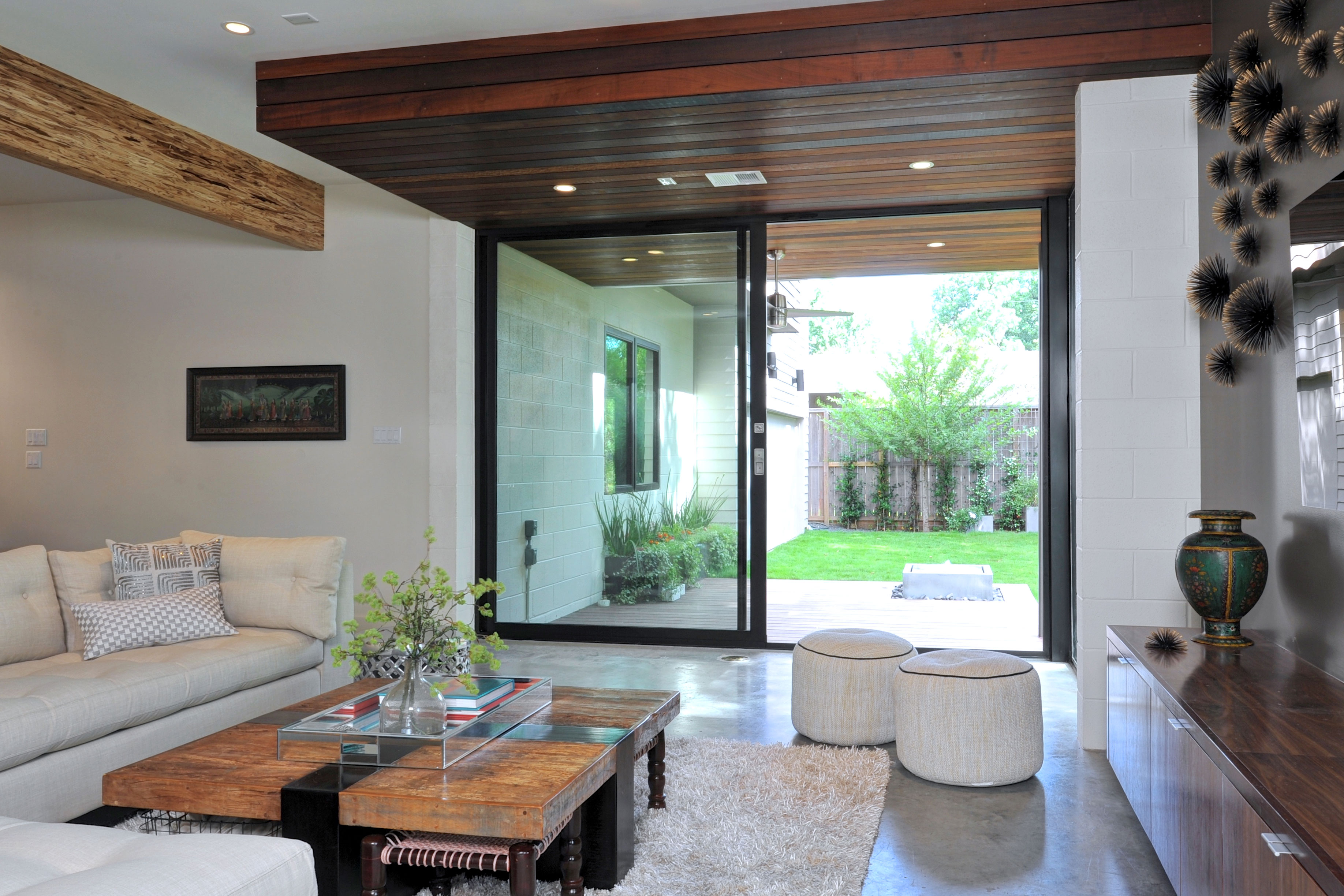
[Courtesy of StudioMET]
Agrawal says the family aims to be mindful of waste, pollution, and energy consumption in every area of their lives. They used cloth diapers when their kids were babies—switching to biodegradable diapers when life got hectic—and they still use cloth napkins and dishrags, recycle everything, wash and reuse Ziploc baggies, and hang-dry their clothes, to name a few everyday things that almost anyone could do. She says they also chose easy to maintain countertops (Caesarstone) and floors (polished granite) that require no chemicals to clean—all you need is soap and water. The family also has an electric car and a hybrid, the former of which they can charge at home.
Agrawal suggests anyone on the fence about making similar, serious changes to their house should do a projected cost-analysis to see if it makes financial sense. At the end of the day, though, she says going green justifies the decision, even if it’s a little more expensive. “What you cannot put a price on is your values and desires for sustainable living.”
The importance of natural light
Architect Yoonchul You says natural light should be integrated into all projects, and this Houston house was no exception. “Light, air quality, and spatial proportions affect how the space is experienced, and with a project of this residential scale, light affects how you live and function in the space,” You says. “It’s also critical to think about how the light quality will change over time and how it affects the space. And if windows and glazing are appropriate, it can help minimize the utility bill. Windows and a sliding wall of glass brought light into the common space, too.”

